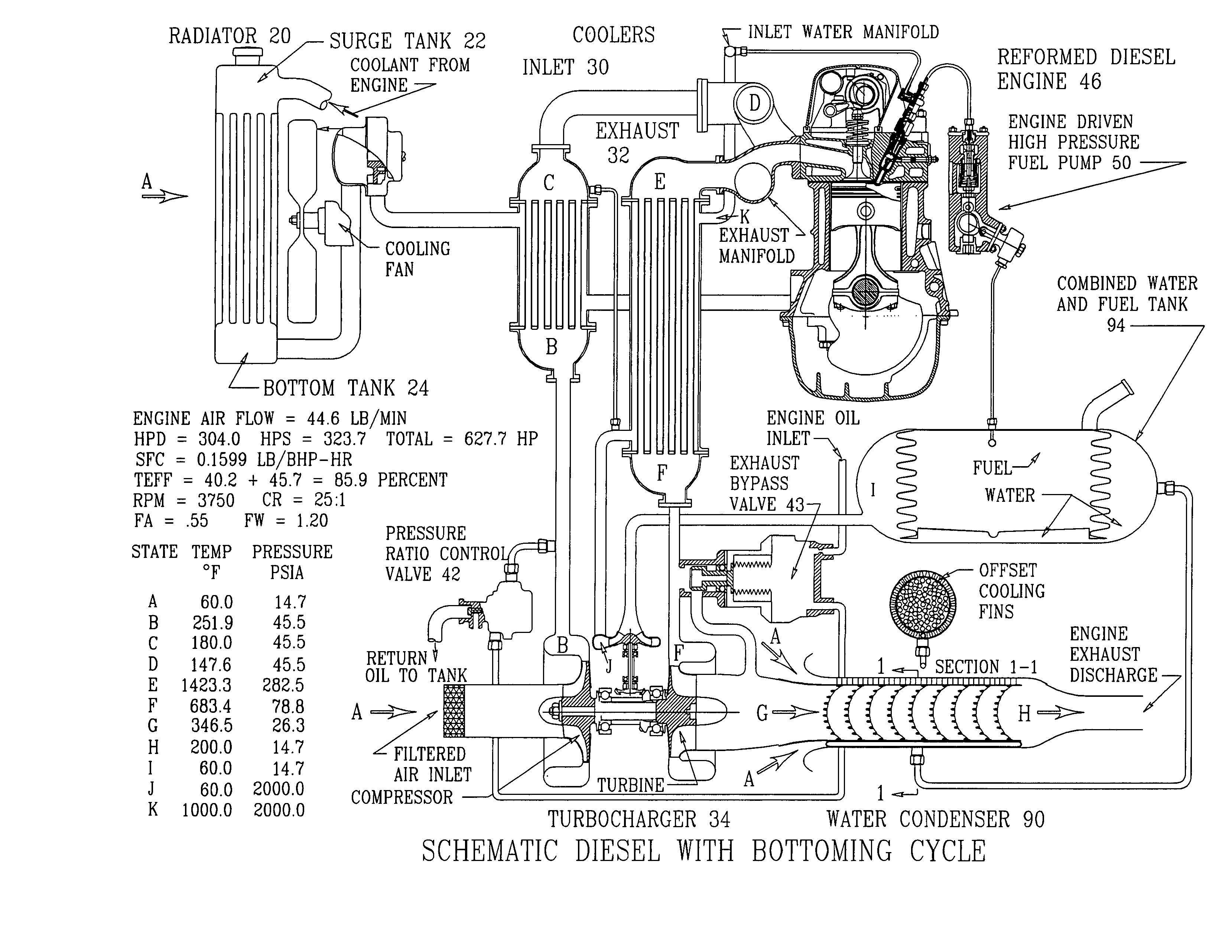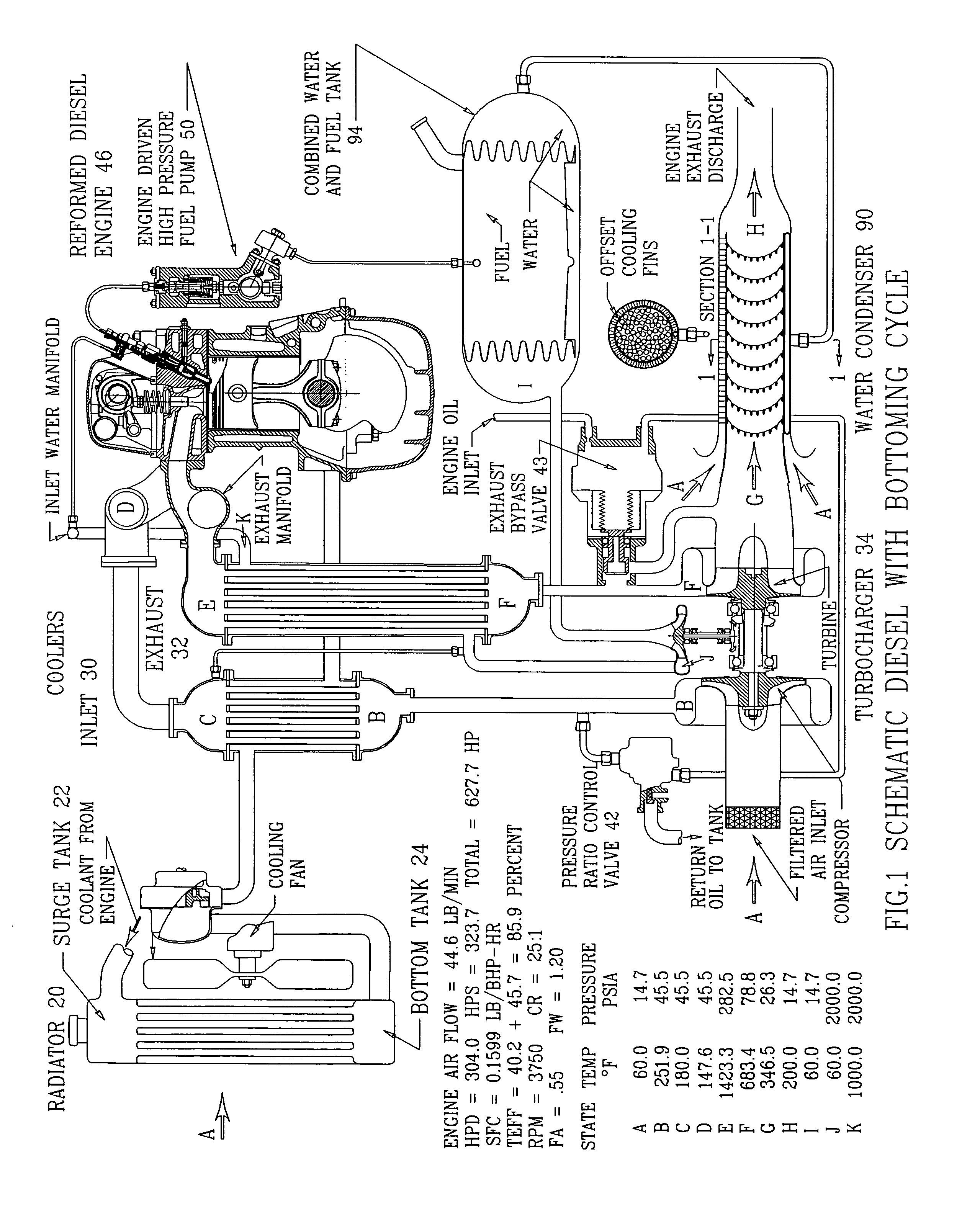Van Nimwegen efficient pollution free internal combustion engine
a pollution-free, internal combustion engine technology, applied in the direction of machines/engines, liquid fuel feeders, fuel injecting pumps, etc., can solve the problems of high cost and storage problems associated with cryogenic oxygen use, short life of emulsions, and questionable stability of emulsions, etc., to achieve high efficiency, eliminate pollutants from exhaust, and high efficiency
- Summary
- Abstract
- Description
- Claims
- Application Information
AI Technical Summary
Benefits of technology
Problems solved by technology
Method used
Image
Examples
main embodiment
Operation—Main Embodiment
[0037]FIG. 1. is a Schematic Drawing of the Compression Ignition Engine Cycle. This is a cycle definition used for the performance analysis of the internal combustion engine as concieved for this invention with turbocharging, intercooling, precombuster (reformer), two cycle operation, exhaust cooling with a water seperator in the exhaust followed by two cycle as a steam engine. An extensive analytical analysis of each of the components is required to arrive at a selection for the optimum engine to be used for a specific vehicular design. Many variables can be studied to understand their influence on reducing the pollutants discharged into the environment. In the example to be presented, the turbocharger compressor pressure ratio, the diesel compression ratio, intercooling, FA ratio and exhaust cooling will be discussed. The cycle analysis consists of the following eight designated state points. From ambient condition to State A, represents the predicted pres...
example
[0042]A modification of the Mercedes Benz 200d, with a Garrett turbocharger, was selected as an example for a CI automotive engine that could be used for the analytical study of the theroy of water injection and the introduction of a bottoming steam engine cycle on the third stroke of a four cycle engine. This modified six cylinder diesel engine with precombuster has a bore of 3.710 inches piston diameter and a stroke of 3.937 inches. Assumed turbocharger pressure ratio of 3.0:1 and an engine cycle compression ratio of 25:1. Operating speed of 3750 RPM. Diesel fuel used C10H22 with a LHV of 19,192 BTU / lb. Intake Valve Open at 48 degrees with fuel injected at 167 degrees. Shower Head Area of 0.032 square inches. Exhaust valve open at 308 degrees. The analysis was based on the assumption that the duration of the fuel injection is proportional to the fuel-air ratio. The start of water injection has been delayed by a prescribed amount to allow ignition of the fuel to start in the reform...
PUM
 Login to View More
Login to View More Abstract
Description
Claims
Application Information
 Login to View More
Login to View More - R&D
- Intellectual Property
- Life Sciences
- Materials
- Tech Scout
- Unparalleled Data Quality
- Higher Quality Content
- 60% Fewer Hallucinations
Browse by: Latest US Patents, China's latest patents, Technical Efficacy Thesaurus, Application Domain, Technology Topic, Popular Technical Reports.
© 2025 PatSnap. All rights reserved.Legal|Privacy policy|Modern Slavery Act Transparency Statement|Sitemap|About US| Contact US: help@patsnap.com



